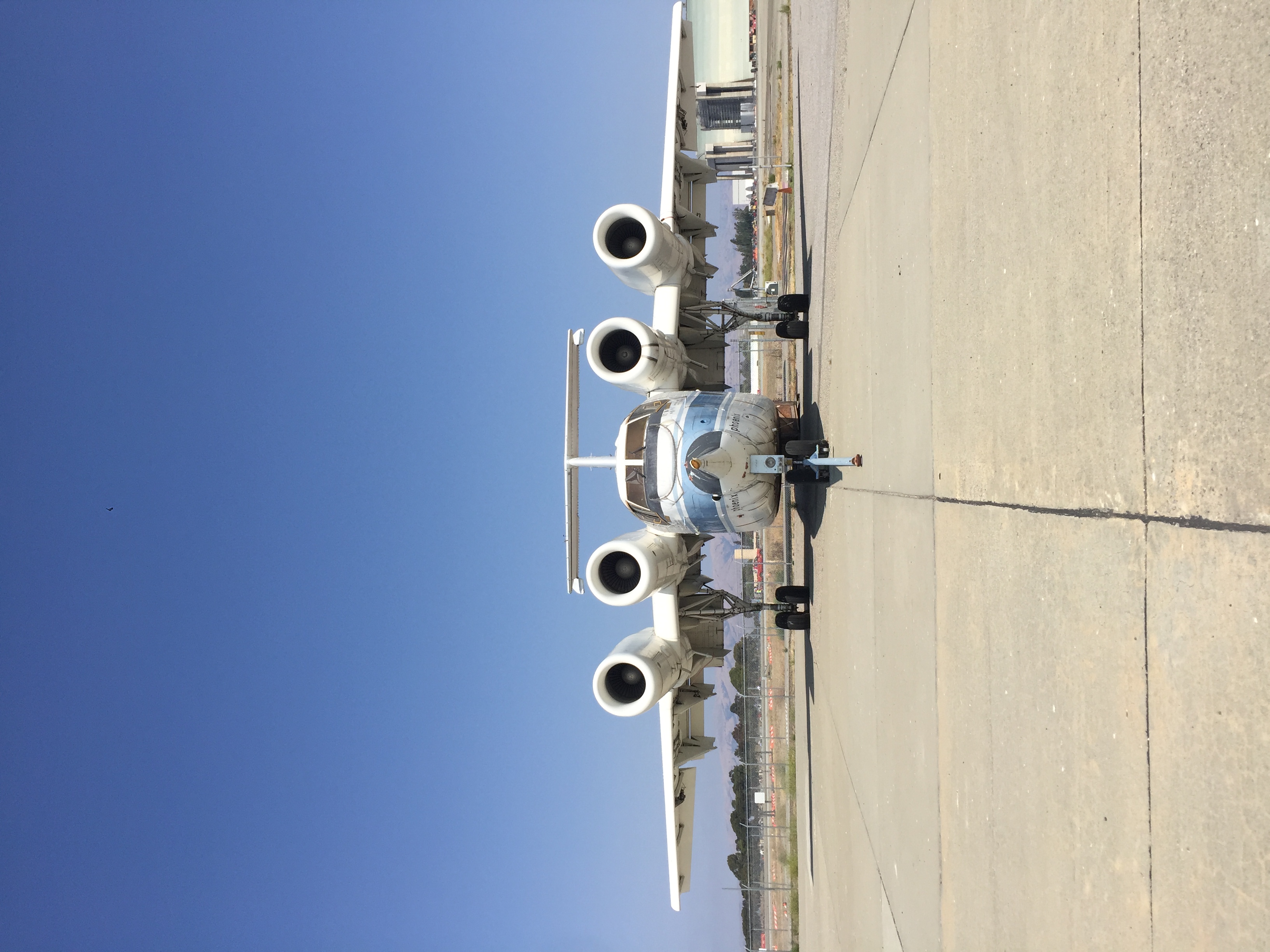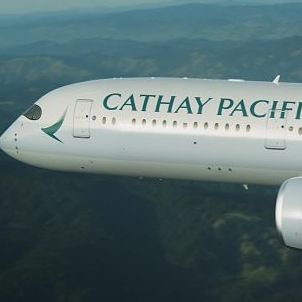Moderators: richierich, ua900, PanAm_DC10, hOMSaR
Anti-Ice Systems
I'm currently studying for ATPL exams and I just need some clarification on a few things...
I understand that an airliner (737/A320) engine anti-ice systems need to be switched on around +10oc and in visible moisture, the question I ask myself is how can ice form at +10oc? Is the reason that ice can form at this temperature is because of the drop in pressure & temperature in the engine inlet that results in ice being able to form and the temperature drops to 0oc or below?
I've also read that most airliners don't need to use wing anti ice unless its in really cold conditions, how is this so? From experience of flying GA aircraft with anti-ice systems, we need to switch them on at +3oc and visible moisture, why is this not the same for an airliner?
Thank you
I understand that an airliner (737/A320) engine anti-ice systems need to be switched on around +10oc and in visible moisture, the question I ask myself is how can ice form at +10oc? Is the reason that ice can form at this temperature is because of the drop in pressure & temperature in the engine inlet that results in ice being able to form and the temperature drops to 0oc or below?
I've also read that most airliners don't need to use wing anti ice unless its in really cold conditions, how is this so? From experience of flying GA aircraft with anti-ice systems, we need to switch them on at +3oc and visible moisture, why is this not the same for an airliner?
Thank you
Re: Anti-Ice Systems
A good comparison is in some carburated pistons, where there is a whole curve where carb ice can form, and it may well be in quite warm temps and has more to do with humidity than anything. Cessna 172s and 182s are notorious ice makers, because of the design of the carburetor causing a super cooling effect. I'd imagine the same can happen in the cowling of a CFM56
Re: Anti-Ice Systems
With regard to turbojet/turbofan airliners, experience has found that supercooled water droplets exist and can go from a liquid or vaporous to solid state upon striking a surface of the engine or airframe. In addition, the temperature of air drops as pressure drops and that is the case for moist air entering an engine inlet or even an induction system. As to airliners operating at altitude in cruise flight; often water is already frozen into crystals and may not adhere to the wings and tail surfaces. Therefore, use of airframe anti-ice may not be necessary.
-

- ArcticFlyer
- Posts: 433
- Joined:
Re: Anti-Ice Systems
In addition to the previous replies regarding engine anti-ice I would add that +10 is used to add a comfortable buffer above the highest temperature where ice could form, as the "cost" of operating the anti-ice is minimal and the effect of forming (and shedding) ice on the intakes can be really bad.
As far as wing anti-ice goes the worst icing I've seen has consistently been in the range of 0 to -5 TAT but, in general, wing anti-ice isn't necessary. This is partly due to the "ram rise" between TAT and SAT (OAT) at high airspeeds which produces a relatively narrow range of temperatures where icing is likely. At 400 kts true, for example, the ram rise is over 20 degrees which is the difference between -20 and 0. Icing is unlikely below -20 and impossible below -40 since most (or all if below -40) moisture will be frozen already. Furthermore, jets don't cruise in the altitudes where icing is the worst but are only briefly exposed during climb and descent. So, rather than saying airliners only need to use wing anti-ice when it's "really cold" I would say they only need to use it when it's "really bad".
As far as wing anti-ice goes the worst icing I've seen has consistently been in the range of 0 to -5 TAT but, in general, wing anti-ice isn't necessary. This is partly due to the "ram rise" between TAT and SAT (OAT) at high airspeeds which produces a relatively narrow range of temperatures where icing is likely. At 400 kts true, for example, the ram rise is over 20 degrees which is the difference between -20 and 0. Icing is unlikely below -20 and impossible below -40 since most (or all if below -40) moisture will be frozen already. Furthermore, jets don't cruise in the altitudes where icing is the worst but are only briefly exposed during climb and descent. So, rather than saying airliners only need to use wing anti-ice when it's "really cold" I would say they only need to use it when it's "really bad".
-

- Starlionblue
- Posts: 21730
- Joined:
Re: Anti-Ice Systems
We very seldom use wing anti ice. I never have, and most guys I talk to may have used it a couple of times in decades. As ArcticFlyer says, it has to be "really bad", like extended holding at -2 in clouds or something.
Engine anti-ice is routinely used from +10 Total Air Temperature to -40 Static Air Temperature. With moisture in the air, the pressure changes in the intake can easily cool air from +10 to below freezing. As mentioned, below -40 moisture is ice crystals already. It won't be an issue.
Engine anti-ice is routinely used from +10 Total Air Temperature to -40 Static Air Temperature. With moisture in the air, the pressure changes in the intake can easily cool air from +10 to below freezing. As mentioned, below -40 moisture is ice crystals already. It won't be an issue.
Re: Anti-Ice Systems
The real answer here is “Venturi effect”. Look that up. The air gets colder.
Re: Anti-Ice Systems
Starlionblue wrote:We very seldom use wing anti ice.
Only used wing anti ice today, severe ice detected.
Re: Anti-Ice Systems
greg85 wrote:The real answer here is “Venturi effect”. Look that up. The air gets colder.
The ideal gas law (PV = nRT) actually.
-

- eeightning
- Posts: 74
- Joined:
Re: Anti-Ice Systems
Except a Jet engine inlet is a divergent duct. Pressure and temperature increases. It's not a carburetor.
Re: Anti-Ice Systems
The other issue here is hygrometry, the ability of air to hold moisture in its vapor state, and how it will condense out as a combined function of temperature and vapor pressure. If the condensation occurs near surfaces that are below freezing, due to temperature drops related to altitude or accelerated airflow, then you have the conditions for icing.
Thus it's a complex issue, and creating a safety margin is a simple way to deal with the complexity, being both wise and cheap relative to the consequences. Especially for aircraft traveling at high speed, for which surrounding airstream conditions can change very quickly. The margin protects you from sudden changes or slugs of moisture in the air. It's good to have that extra buffer in place.
Thus it's a complex issue, and creating a safety margin is a simple way to deal with the complexity, being both wise and cheap relative to the consequences. Especially for aircraft traveling at high speed, for which surrounding airstream conditions can change very quickly. The margin protects you from sudden changes or slugs of moisture in the air. It's good to have that extra buffer in place.
Re: Anti-Ice Systems
Starlionblue wrote:We very seldom use wing anti ice. I never have, and most guys I talk to may have used it a couple of times in decades. As ArcticFlyer says, it has to be "really bad", like extended holding at -2 in clouds or something.
Engine anti-ice is routinely used from +10 Total Air Temperature to -40 Static Air Temperature. With moisture in the air, the pressure changes in the intake can easily cool air from +10 to below freezing. As mentioned, below -40 moisture is ice crystals already. It won't be an issue.
Indeed, in the design process, Boeing determined that the 777 almost certainly did not need wing anti ice, because of the wing design as well as the power and climb. United insisted on it, so they installed a limited system.
Who is online
Users browsing this forum: CARST and 32 guests
